New Superglue Allows For Bonding Stretchable Hydrogels

New superglue allows for bonding stretchable hydrogels
A team of researchers at Johannes Kepler University Linz has developed a new type of glue that can be used to bond hydrogels to other hard or soft objects. In their paper published on the open-access site Science Advances, the group explains their development process, the structure of the glue, how it works and in what ways.
Hydrogels, as the name suggests, are materials made mainly out of water. They are typically rubbery and are often elastic. Many of them have been developed to allow for the creation of materials that are more like those found in living creatures. Some examples include soft contact lenses, soft bone replacement in the vertebrae and even jelly-like robots. But one thing that has been holding back more advanced applications is the inability to glue or bond hydrogels with other objects in ways that allow for bending or stretching, or even for attaching well to hard objects. In this new effort, the researchers report they have developed a glue that solves this problem.
Read more.
More Posts from T-sci-eng and Others
On the cross product
Understand the concept and not the definition.

If you have studied vectors, then the notion of a cross product is something that you might be familiar with.
Although it is taught in many colleges and schools in its mathematical glory, this post aims to supplement the same but with an real-life example.
The cross product

The magnitude of the cross product is the area of the parallelogram with two sides A and B.
The orientation of the cross product is orthogonal to the plane containing this parallelogram.
Why on earth is it orthogonal ? Like seriously…
I mean this is one of the burning questions regarding the cross product and yet for some reason, textbooks don’t get to the bottom of this.
It is modeling a real life scenario!!
The scenario being :
When you try to twist a screw inside a block in the clockwise direction like so, the nail moves down and vice versa.

i.e When you move from the screw from u to v, then the direction of the cross product denotes the direction the screw will move.

That’s why the direction of the cross product is orthogonal. It’s really that simple :D

Have a good day!
A2A : Anonymous
Solar System: Things to Know This Week
Reaching out into space yields benefits on Earth. Many of these have practical applications — but there’s something more than that. Call it inspiration, perhaps, what photographer Ansel Adams referred to as nature’s “endless prospect of magic and wonder.“
Our ongoing exploration of the solar system has yielded more than a few magical images. Why not keep some of them close by to inspire your own explorations? This week, we offer 10 planetary photos suitable for wallpapers on your desktop or phone. Find many more in our galleries. These images were the result of audacious expeditions into deep space; as author Edward Abbey said, "May your trails be crooked, winding, lonesome, dangerous, leading to the most amazing view.”

1. Martian Selfie
This self-portrait of NASA’s Curiosity Mars rover shows the robotic geologist in the “Murray Buttes” area on lower Mount Sharp. Key features on the skyline of this panorama are the dark mesa called “M12” to the left of the rover’s mast and pale, upper Mount Sharp to the right of the mast. The top of M12 stands about 23 feet (7 meters) above the base of the sloping piles of rocks just behind Curiosity. The scene combines approximately 60 images taken by the Mars Hand Lens Imager, or MAHLI, camera at the end of the rover’s robotic arm. Most of the component images were taken on September 17, 2016.
800 x 600
1024 x 768
1280 x 1024
1600 x 1200
1280 x 800
1440 x 900
1920 x 1200

2. The Colors of Pluto
NASA’s New Horizons spacecraft captured this high-resolution, enhanced color view of Pluto on July 14, 2015. The image combines blue, red and infrared images taken by the Ralph/Multispectral Visual Imaging Camera (MVIC). Pluto’s surface sports a remarkable range of subtle colors, enhanced in this view to a rainbow of pale blues, yellows, oranges, and deep reds. Many landforms have their own distinct colors, telling a complex geological and climatological story that scientists have only just begun to decode.
800 x 600
1024 x 768
1280 x 1024
1600 x 1200
1280 x 800
1440 x 900
1920 x 1200

3. The Day the Earth Smiled
On July 19, 2013, in an event celebrated the world over, our Cassini spacecraft slipped into Saturn’s shadow and turned to image the planet, seven of its moons, its inner rings — and, in the background, our home planet, Earth. This mosaic is special as it marks the third time our home planet was imaged from the outer solar system; the second time it was imaged by Cassini from Saturn’s orbit, the first time ever that inhabitants of Earth were made aware in advance that their photo would be taken from such a great distance.
800 x 600
1024 x 768
1280 x 1024
1600 x 1200
1280 x 800
1440 x 900
1920 x 1200

4. Looking Back
Before leaving the Pluto system forever, New Horizons turned back to see Pluto backlit by the sun. The small world’s haze layer shows its blue color in this picture. The high-altitude haze is thought to be similar in nature to that seen at Saturn’s moon Titan. The source of both hazes likely involves sunlight-initiated chemical reactions of nitrogen and methane, leading to relatively small, soot-like particles called tholins. This image was generated by combining information from blue, red and near-infrared images to closely replicate the color a human eye would perceive.
800 x 600
1024 x 768
1280 x 1024
1600 x 1200
1280 x 800
1440 x 900
1920 x 1200

5. Catching Its Own Tail
A huge storm churning through the atmosphere in Saturn’s northern hemisphere overtakes itself as it encircles the planet in this true-color view from Cassini. This picture, captured on February 25, 2011, was taken about 12 weeks after the storm began, and the clouds by this time had formed a tail that wrapped around the planet. The storm is a prodigious source of radio noise, which comes from lightning deep within the planet’s atmosphere.
800 x 600
1024 x 768
1280 x 1024
1600 x 1200
1280 x 800
1440 x 900
1920 x 1200

6. The Great Red Spot
Another massive storm, this time on Jupiter, as seen in this dramatic close-up by Voyager 1 in 1979. The Great Red Spot is much larger than the entire Earth.
800 x 600
1024 x 768
1280 x 1024
1600 x 1200
1280 x 800
1440 x 900
1920 x 1200

7. More Stormy Weather
Jupiter is still just as stormy today, as seen in this recent view from NASA’s Juno spacecraft, when it soared directly over Jupiter’s south pole on February 2, 2017, from an altitude of about 62,800 miles (101,000 kilometers) above the cloud tops. From this unique vantage point we see the terminator (where day meets night) cutting across the Jovian south polar region’s restless, marbled atmosphere with the south pole itself approximately in the center of that border. This image was processed by citizen scientist John Landino. This enhanced color version highlights the bright high clouds and numerous meandering oval storms.
800 x 600
1024 x 768
1280 x 1024
1600 x 1200
1280 x 800
1440 x 900
1920 x 1200

8. X-Ray Vision
X-rays stream off the sun in this image showing observations from by our Nuclear Spectroscopic Telescope Array, or NuSTAR, overlaid on a picture taken by our Solar Dynamics Observatory (SDO). The NuSTAR data, seen in green and blue, reveal solar high-energy emission. The high-energy X-rays come from gas heated to above 3 million degrees. The red channel represents ultraviolet light captured by SDO, and shows the presence of lower-temperature material in the solar atmosphere at 1 million degrees.
800 x 600
1024 x 768
1280 x 1024
1600 x 1200
1280 x 800
1440 x 900
1920 x 1200

9. One Space Robot Photographs Another
This image from NASA’s Mars Reconnaissance Orbiter shows Victoria crater, near the equator of Mars. The crater is approximately half a mile (800 meters) in diameter. It has a distinctive scalloped shape to its rim, caused by erosion and downhill movement of crater wall material. Since January 2004, the Mars Exploration Rover Opportunity has been operating in the region where Victoria crater is found. Five days before this image was taken in October 2006, Opportunity arrived at the rim of the crater after a drive of more than over 5 miles (9 kilometers). The rover can be seen in this image, as a dot at roughly the “ten o'clock” position along the rim of the crater. (You can zoom in on the full-resolution version here.)
800 x 600
1024 x 768
1280 x 1024
1600 x 1200
1280 x 800
1440 x 900
1920 x 1200

10. Night Lights
Last, but far from least, is this remarkable new view of our home planet. Last week, we released new global maps of Earth at night, providing the clearest yet composite view of the patterns of human settlement across our planet. This composite image, one of three new full-hemisphere views, provides a view of the Americas at night from the NASA-NOAA Suomi-NPP satellite. The clouds and sun glint — added here for aesthetic effect — are derived from MODIS instrument land surface and cloud cover products.
Full Earth at night map
Americas at night
Discover more lists of 10 things to know about our solar system HERE.
Make sure to follow us on Tumblr for your regular dose of space: http://nasa.tumblr.com

Due to the Mandela Effect, we remember things that didn’t happen or exist. Get the answer and why in our NEW VID: https://youtu.be/hvu4D1jngCY
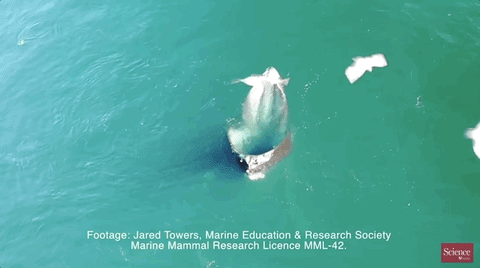
apparently one whale years ago was observed doing this for hours and now more and more whales in the area are seen copying it so we think it’s a whole new behavior and it seems to be a response to shrinking food sources.
Instead of expending any energy actively hunting, the whale just holds its mouth open wherever fish are being hunted by birds. To escape the birds, the fish try to hide in the whale’s mouth because it’s a darker area that looks like shelter. …They’re turning into giant, sea-mammal pitcher plants.
https://onlinelibrary.wiley.com/doi/epdf/10.1111/mms.12557?referrer_access_token=bXLTS5BeSw_vlIKHkM0bYIta6bR2k8jH0KrdpFOxC654HjreJ8D19K86UreR5JPsSRb0CuGhiJSV1L1ht-N1Gf_K_1a9MREFzQGU9oJDNctsKDin_HXcYEdsLg3EbcTl
On Monday, the Onion reported that the “Nation’s math teachers introduce 27 new trig functions”. It’s a funny read. The gamsin, negtan, and cosvnx from the Onion article are fictional, but the piece has a kernel of truth: there are 10 secret trig functions you’ve never heard of, and they have delightful names like ‘haversine’ and ‘exsecant’.
Centrifugal force and seat belts

The basic concept of a seatbelt is to protect you in an automobile collision by holding you in your seat. This prevents you from flying forward and colliding with the dashboard or windshield.
How do you do that ?
Many common seat belts design have something known as a centrifugal clutch. This arrangement has a weight attached to the end of a spool
When the spool rotates at a low speed, the weight is held through spring action and is allowed to spin freely.

But you must have noticed that if you try to pull the seat belt faster then it kinda gets stuck.
This is because as you rotate the spool faster, centrifugal force causes the weight to be pushed out and that stops the spool from rotating further.

This adds tension to your seat belt and holds you to your seat at the time of a crash.
Have a great day!
* Other seatbelt mechanisms
** Seatbelt physics

Behold the awesomeness that is the heart of a blue whale. This colossal organ weighs 440 pounds and was retrieved from the carcass of a whale that had washed up on the shore of Newfoundland in 2014. Despite decomposition the heart was still in such great condition that it was a perfect candidate for preservation via plastination, which is precisely what was done by mammalogy technicians at the Royal Ontario Museum in Toronto.
Head over to Wired to learn how museum scientists went about preserving this titanic ticker.
[via Wired]
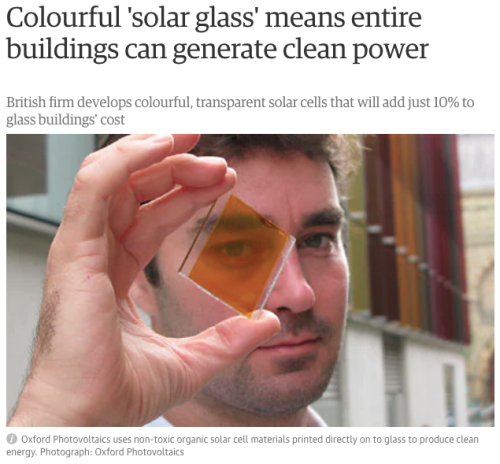

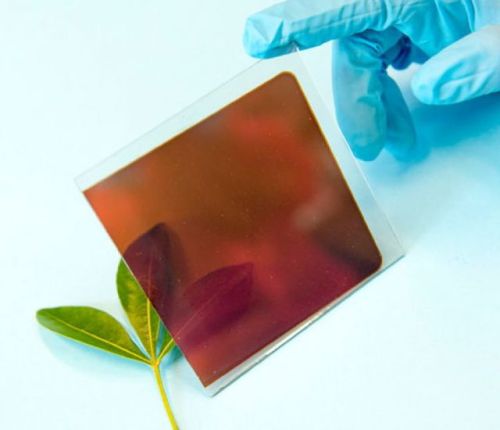
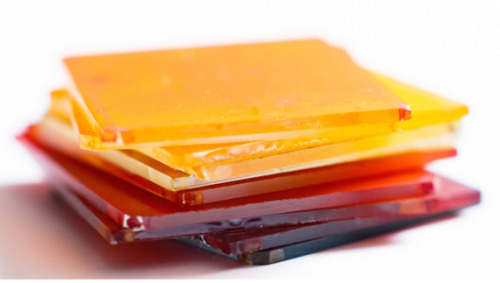
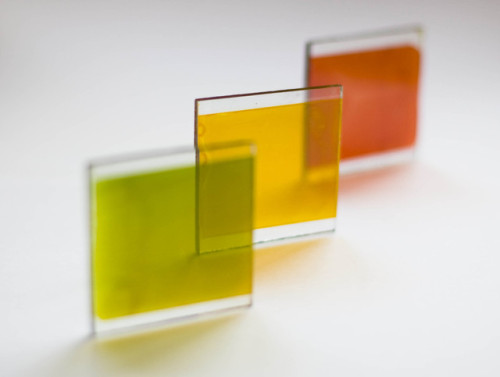
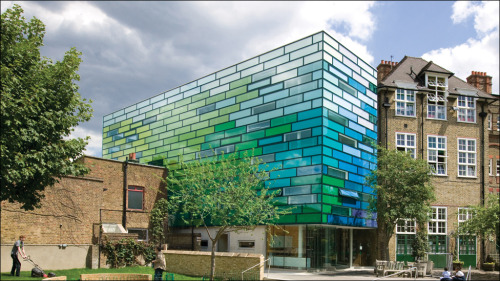
Just imagine a world full of beautiful stained glass windows which also generate electricity…
[Oxford Photovoltaics]




Alloys: Wood’s Metal
Also known as Lipowtiz’s alloy as well as the commercial names of Cerrobend, Bendalloy, Pewtalloy, and MCP 158 among others, Wood’s metal is a bismuth alloy consisting of 50% bismuth, 26.67% lead, 13.33% tin, and 10% cadmium by weight. Named for the man who invented it, a Barnabas Wood, Wood’s metal was discovered/created by him in 1860.
Wood’s metal is both a eutectic and a fusible alloy, with a low melting temperature of approximately 70 °C (158 °F). While none of its individual components have a melting temperature of less than 200 °C, a eutectic alloy can be considered as a pure (homogeneous) substance and always has a sharp melting point. If the elements in a eutectic compound or alloy are not as tightly bound as they would be in the pure elements, this leads to a lower melting point. (Eutectic substances can have higher melting points, if its components bind tightly to themselves.)
Useful as a low-temperature solder or casting metal, Wood’s metal is also used as valves in fire sprinkler systems. Thanks to its low melting temperature, Wood’s metal melts in the case of a fire and thanks to the bismuth it is made from, the alloy also shrinks when it melts (bismuth, like water ice, is one of the few substances to do so) which is the key to setting off the sprinkler system. Wood’s metal is also often used as a filler when bending thin walled metal tubes: the filler prevents the tube from collapsing, then can be easily removed by heating and melting the Wood’s metal. Other applications include treating antiques, as a heat transfer medium in hot baths, and in making custom shaped apertures and blocks for medical radiation treatment.
With the addition of both lead and cadmium, however, Wood’s metal is considered to be a toxic alloy. Contact with bare skin is thought to be harmful, especially once the alloy has melted, and vapors from cadmium containing alloys are also quite dangerous and can result in cadmium poisoning. A non-toxic alternative to Wood’s metal is Field’s metal, composed of bismuth, tin, and indium.
Sources: ( 1 - image 4 ) ( 2 - image 2 ) ( 3 ) ( 4 )
Image sources: ( 1 ) ( 3 )





Google’s Wireless ‘Pixel Buds’ Headphones Can Translate 40 Languages in Real Time
-
 oneapplepiefromscratchplease liked this · 7 years ago
oneapplepiefromscratchplease liked this · 7 years ago -
 angel-no-crux liked this · 7 years ago
angel-no-crux liked this · 7 years ago -
 rxgamka reblogged this · 7 years ago
rxgamka reblogged this · 7 years ago -
 destopia liked this · 7 years ago
destopia liked this · 7 years ago -
 enginigger liked this · 7 years ago
enginigger liked this · 7 years ago -
 t-sci-eng reblogged this · 7 years ago
t-sci-eng reblogged this · 7 years ago -
 sciencenerd4-blog liked this · 7 years ago
sciencenerd4-blog liked this · 7 years ago -
 diazalus-blog liked this · 7 years ago
diazalus-blog liked this · 7 years ago -
 athoni-kun reblogged this · 7 years ago
athoni-kun reblogged this · 7 years ago -
 athoni-kun liked this · 7 years ago
athoni-kun liked this · 7 years ago -
 gyrosummers liked this · 7 years ago
gyrosummers liked this · 7 years ago -
 mysticalmusicalchaos reblogged this · 7 years ago
mysticalmusicalchaos reblogged this · 7 years ago -
 brashka liked this · 7 years ago
brashka liked this · 7 years ago -
 pinkprogram reblogged this · 7 years ago
pinkprogram reblogged this · 7 years ago -
 pinkprogram liked this · 7 years ago
pinkprogram liked this · 7 years ago -
 feet-princesss-blog liked this · 7 years ago
feet-princesss-blog liked this · 7 years ago -
 jammspam liked this · 7 years ago
jammspam liked this · 7 years ago -
 askprosecutie liked this · 7 years ago
askprosecutie liked this · 7 years ago -
 shogun-kuro liked this · 7 years ago
shogun-kuro liked this · 7 years ago -
 materialsscienceandengineering reblogged this · 7 years ago
materialsscienceandengineering reblogged this · 7 years ago
